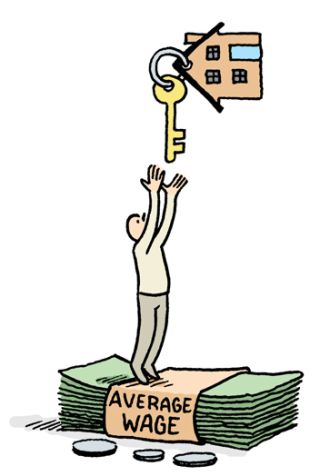Affordability Crisis as 1 in 5 in poverty after housing costs are included

The overall poverty rate in Ireland increases from 11.6 per cent before housing costs are included to 19 per cent after housing costs are counted – an increase of almost 371,000 people. This means that the real number of people in poverty is 952,185 – almost 1 in 5 of the total population, according to Social Justice Ireland’s latest study, titled ‘Housing Costs and Poverty 2022'.
Far from supporting families out of poverty, housing subsidies are so inadequate as to be allowing greater numbers into it. The poverty risk of households in receipt of housing subsidies continues to be the highest of all occupancy types.
One in five tenants in the private rented sector are subsidised through the Housing Assistance Payment (HAP); that does not include tenants in the Rental Accommodation Scheme or those on Rent Supplement. Yet despite huge Government spending on these subsidies, the need for additional rent payments, or “top ups” are driving increases in poverty. It is essential that Government increase spending on actually building social homes instead of relying on and subsidising a dysfunctional private rented sector.
Housing Costs and Poverty 2022 analyses the impact of housing costs – mortgage interest and rent – on the poverty rates of various household types in 2021.
Despite Government commitments to increasing social housing construction, increasing numbers of social housing tenants are forced to rent in the private rented sector. This latest study shows that renters are particularly hard hit – they are more than twice as likely to be at risk of poverty before housing costs are included than owner occupiers, and more than four times more likely after housing costs are included.
Far from supporting families out of poverty, the inadequacy of housing subsidies as a social housing solution are so inadequate as to be driving greater numbers into it. Social Justice Ireland has consistently argued for the prioritisation of social housing delivery. This would put over 60,000 homes back into the private rented market, which would undoubtedly have a positive impact on market rents.
Housing Costs and Poverty 2022 - main findings:
- The overall poverty rate increases from 11.6 per cent before housing costs are included to 19 per cent after housing costs are counted – an increase of almost 371,000 people.
- Renters are the worst affected, with 41.6 per cent at risk of poverty after housing payments.
- For households in receipt of rent subsidies, the poverty rate after rent payments is 59.1 per cent.
- For households in Local Authority accommodation, the poverty rate after housing payments is 50.5 per cent.
- Lone parents are the worst affected of all household types, with an increase in the poverty rate to 51 per cent after housing payments.
- People living with a long-standing health problem are also severely affected, with a poverty rate increasing from 39.1 per cent before housing costs to 53.8 per cent after.
Our Housing Costs and Poverty 2022 policy briefing is available to download now.
There was a heavy reliance on Covid-19 income supports among renters in the reference period, which provided a buffer for renters during this period. However, these supports have now been withdrawn, renters continue to live in precarious situations, with greater poverty risk, and fewer resources to do anything about it. Build to Rent is not the answer. Government needs to do more about affordability.